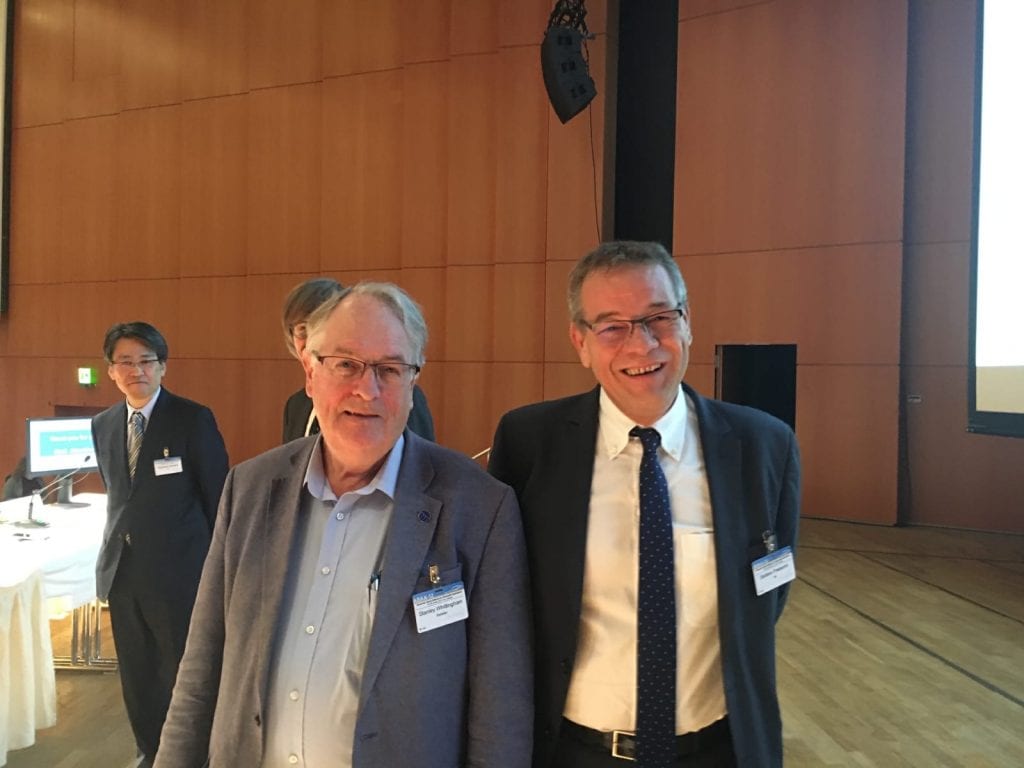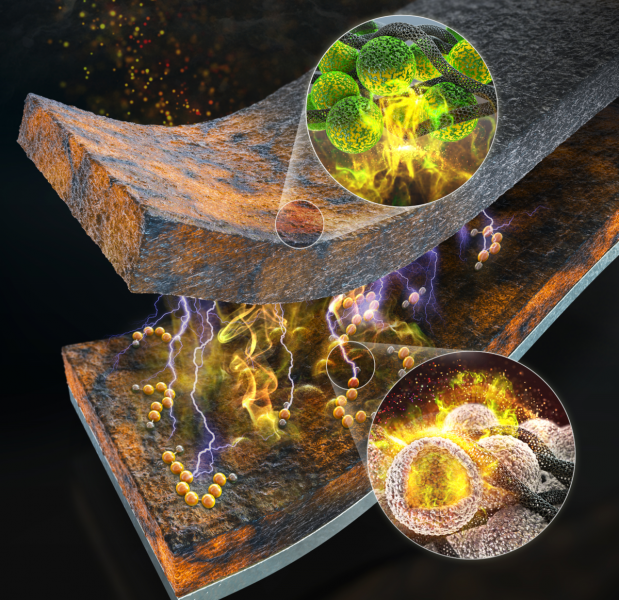As the materials science community celebrates the long awaited Nobel Prize for lithium-ion batteries—which this year won the Nobel Prize in Chemistry—scientists around the world have been speaking to Advanced Science News and sharing their reflections on the three laureates’ pioneering work.
___________
Shirley Meng is the founding director of the Sustainable Power and Energy Center at UC San Diego, which focuses on making breakthroughs in distributed energy generation, storage, and the accompanying power-management systems. She is particularly enthusiastic about the future of the field that the laureates built:
“These three scientists and engineers are true inspiring pioneers in our field. Their breakthroughs in intercalated materials chemistry led to a paradigm shift in energy storage technology. Intercalation chemistry and solid state chemistry are going to enable better batteries in the years to come, where we will see safer, more powerful, more sustainable energy storage solutions enabled by these chemistries!“
___________
Arumugam Manthiram is the director of the Texas Materials Institute and the Materials Science and Engineering Program, the academic home of John B. Goodenough. He emphasizes the pure chemical intuition at the heart of the work:
“The concept of reversible lithium insertion/extraction into host materials originates from solid-state or materials chemistry. The decades of in-depth basic science work at the interface between solid-state chemistry and physics by Professor Goodenough led to the invention of oxide cathodes (positive electrodes), which made lithium-ion batteries with higher energy density practical. Overall, chemistry is at the core and center of the lithium-ion battery revolution.“
___________
Patrice Simon is a professor of materials sciences at Université Paul Sabatier, and serves as the deputy director of the French network of electrochemical energy storage. He zeroes in on the impact that lithium-ion technology is having on society today:
“This Nobel prize is attributed to people who made a discovery that changed peoples’ lives. An example: we all use smartphones and laptops. Without the Li-ion battery technology, smartphones, pads and current lightweight laptops would not exist at all. Same applies to electric vehicles: using the former Ni-MH technology which used to be the best batteries in terms of performance before the discovery of Li-ion batteries, the [vehicles] would have been limited to less than 200 km [of driving distance]. This Nobel [prize] awards fundamental work on a very applied topic and everyone can see and feel the results of this discovery.“
___________
Guihua Yu is a professor of materials science and engineering at the University of Texas at Austin, his work focuses on energy and environmental technologies. He articulates the importance of the ongoing work taking place in the field:
“It is very inspiring for many researchers to see this year’s award going to these three extraordinary scientists. LIBs and energy storage in general, have so significantly impacted mobile electronics, as well as enabled electrified transportation, moving away from fossil fuels to electricity; one of the breakthrough impacts on society from a technological point of view. Even more importantly, with continuous development of inventing more sustainable and energy-efficient battery materials, energy storage will play a central role in enabling a renewable and sustainable future for humankind!“
___________
Qiang Zhang is a full professor at Tsinghua University who works daily on new energy technologies, including Li–S batteries, Li-metal anodes, 3D graphene, and electrocatalysts. He outlines some of the key challenges that face the field today:
“The current energy chemistry of Li-ion batteries proposed by this years’ Chemistry Laureates is a great success. However, there are more challenges in this field. For instance, what is the reason for the introduction of high overpotentials on working electrodes? What is the mechanism for Li ion transportation through an electrolyte/electrode interface? Is it feasible to build a battery with an energy density of 500–700 Wh kg–1 with more than 1000 cycles? How can we maintain a working battery with a cycling life of more than 20 years? The current Nobel Prize in Chemistry confirms the contribution of energy storage, however, there is still much open space that should be carefully explored.“
___________
Yair Ein-Eli is a professor in the department of Materials Science & Engineering at the Technion – Israel Institute of Technology. He is developing new materials for Li-ion batteries, metal-air cells, and fuel cells. Intriguingly, he warns of the potential risks to the field that this award may precipitate, as well as a vision for the future:
“Awarding the prize may have two opposite effects: on one hand, the public and policy makers would now declare that the technology is mature enough and may consider halting any sponsoring of additional work on this vast topic of research, which would be a mistake, of course. On the other extreme, I may assume that the desire to bring new electrochemical technologies that will be designated as “side by side” to Li-ion battery technology (and not as usually being termed as “post Li-ion” technologies) will grow and we will be witnessing more research and focus into this direction. And, there is the mid-term aspect to this view, which is to bring Li-ion battery technology (aiming specifically at the emerging electromobility) via rigorous materials science and engineering, to a status of a totally safe one, holding enough energy to allow a drive [of electric vehicles] without (…almost) a mileage limitation.“
___________

Stefano Passerini is a professor at the Karlsruhe Institute of Technology, Helmholtz Institute Ulm (Germany). He works on electrochemical energy storage in batteries and supercapacitors. He identifies the key reason to be working in this field, and acknowledges the work of other giants the history of battery science:
“I believe the Nobel Prize going to lithium batteries is very appropriate, since these batteries have enabled the societal change resulting from the wireless communication systems, and, even more important, the employment of lithium batteries in the electromobility and stationary energy storage sectors will enable the drastic reduction of CO2 needed to fight against global warming. I also need to mention at least two more scientists, Dr. Scrosati and Dr. Armand, first introducing the “rocking chair” (later called Li-ion) concept and the all-solid-state, lithium polymer batteries, respectively in 1980 and 1981.“
___________
Saiful Islam is a professor of materials science at the University of Bath. His group works on computer modeling of new materials for lithium and sodium batteries. He points out an elegant resonance in the news cycle for this Nobel Prize, and emphasizes the importance of the technology:
“I suspect most people probably first saw this Nobel Prize news on a mobile phone or laptop computer powered by a lithium-ion battery. Indeed, these rechargeable batteries have helped power the portable revolution and now have a crucial role in electric vehicles to lowering carbon emissions and improving air quality. In my view, this award is long overdue and it’s great to see that this important area of materials chemistry has been recognized.”
___________
Michael Thackeray is an Emeritus scientist and Distinguished Fellow at at Argonne National Laboratory. He has been closely involved in the development of improved battery materials for commercial applications> He discusses the utility and versatility of the Lio-ion battery:
“The pioneering ideas and research findings of John Goodenough, Stan Whittingham, and Akira Yoshino that led to the commercialization of lithium-ion batteries in 1991 have revolutionized energy storage. This versatile technology is diverse in its applications. Most importantly, it is impacting the quality of life of humanity and providing an opportunity to address climate change by reducing the use of fossil fuels by storing clean energy, e.g., from the sun and wind, to electrify the planet. I believe that lithium-ion batteries will be the system of choice for decades to come as scientists and engineers seek for an alternative, superior electrochemical system, for example, by using sulfur or oxygen cathodes in combination with a metallic lithium anode – a most difficult task.”
___________
Khalil Amine is a Distinguished Fellow and Manager of the Advanced Battery Technology programs at Argonne National Laboratory, where he is responsible for directing the research into battery systems for electric vehicles and medical applications. He congratulates the three laureates for their contributions:
“I believe all of them made a strong contribution to bringing lithium-ion batteries into existence! Stan developed the first intercalation electrode,John developed the key cathodes that have been commercialized for both consumer and electric vehicles, and Yoshino developed the carbon anode and helped with the first commercialization of the lithium-ion battery!“
___________
The awarding of this Nobel Prize is an acknowledgement of the materials and electronics revolution that is still taking place today. It perhaps marks an inflection point in the history of the field, a moment to take stock of its past, and refocus on the challenges that will define it in the years and decades to come.

















